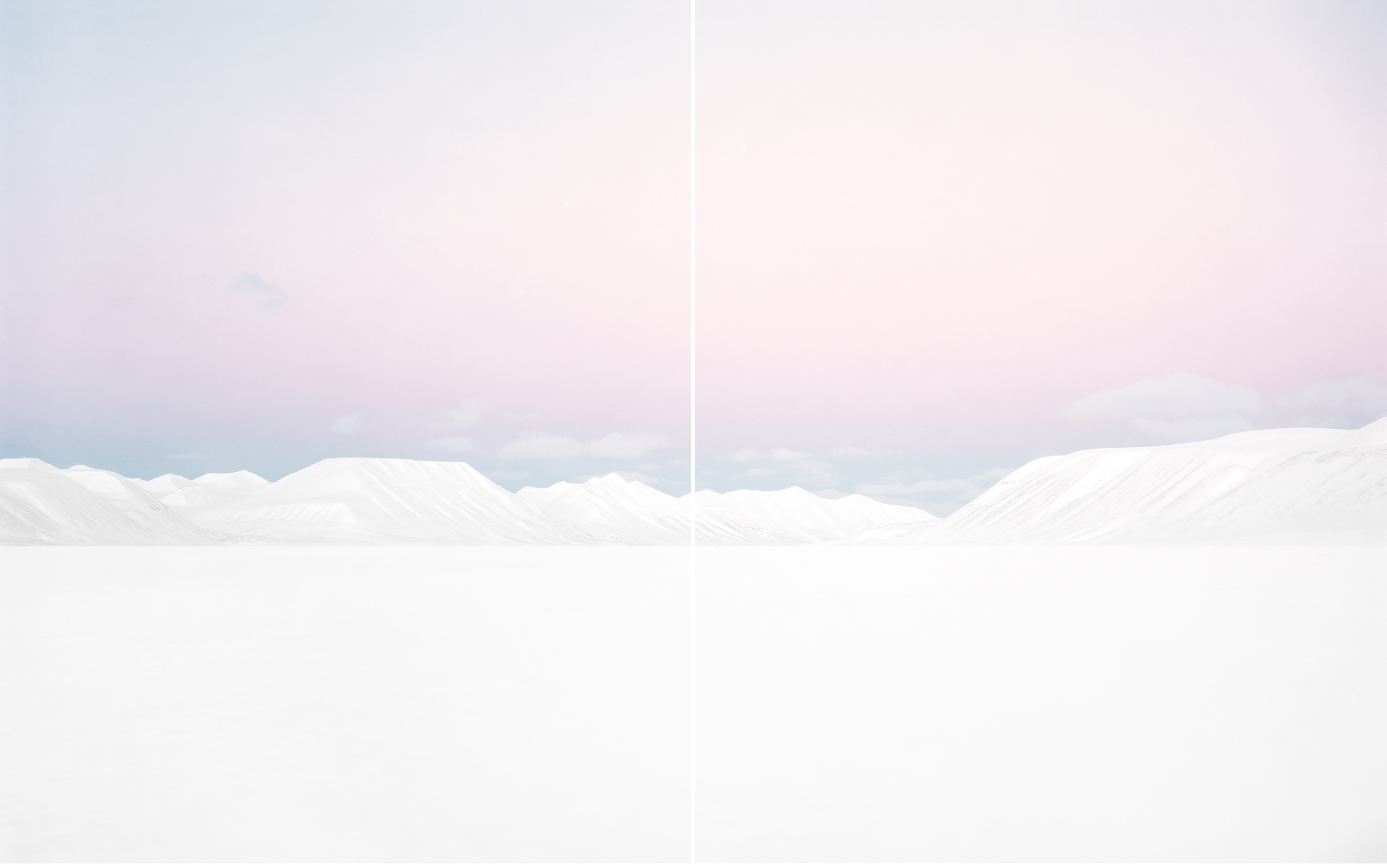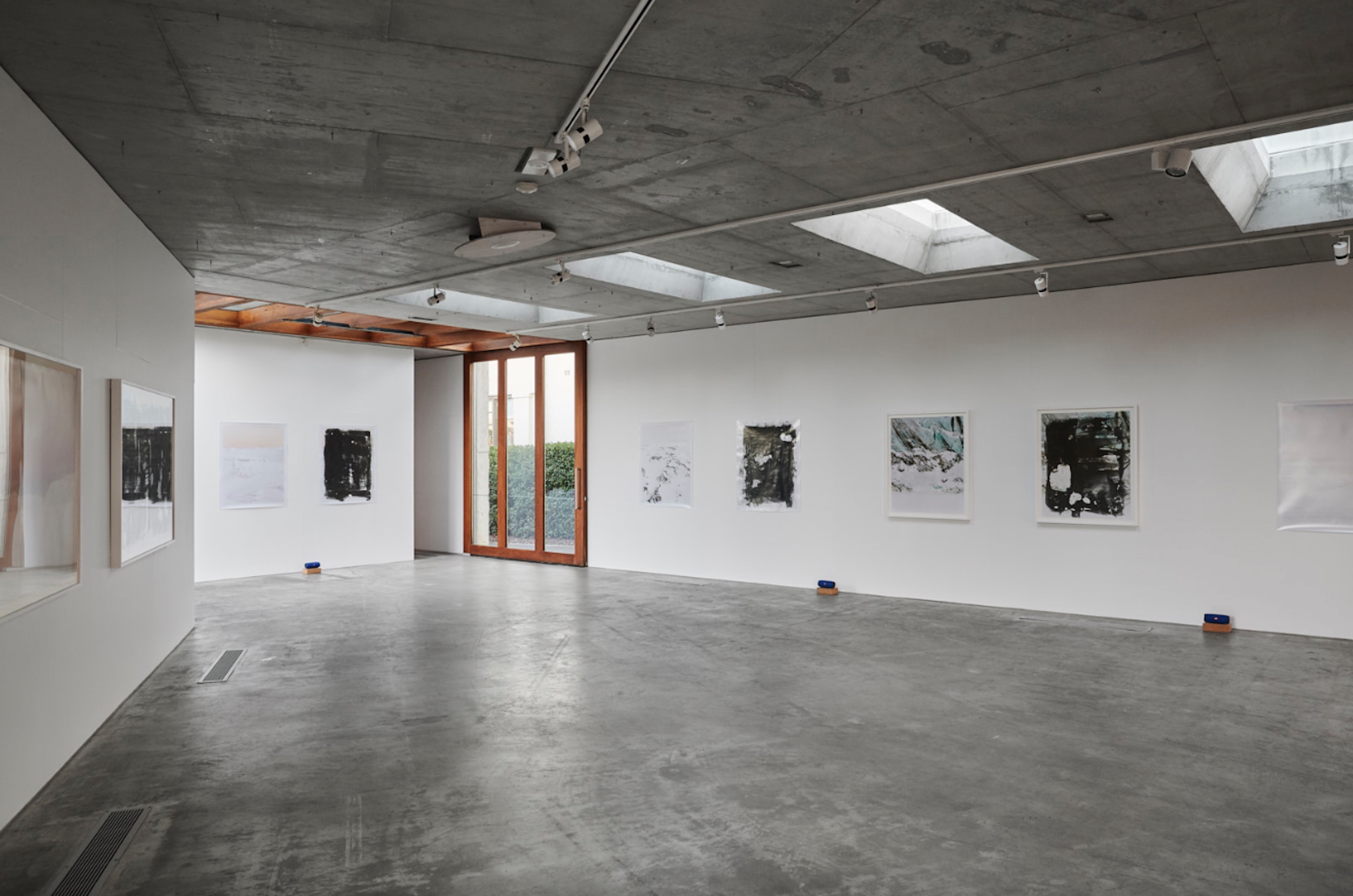Polar Convergence

Polar Convergence presents photographic works of the Arctic by Rohan Hutchinson and sound works of Antarctica by Philip Samartzis.
Hutchinson captures the tonality of the Arctic winter, transforming large-scale pristine landscape images into violent, mutable abstractions. Samartzis focuses on the sounds and spaces of the Antarctic continent where volatile weather and extreme climate collide with fragile ecologies and remote settlements. These soundscapes introduce a spectral Antarctica by channelling natural, human and geophysical forces; while Hutchinson’s blackened landscapes provide a heightened sense of urgency to preserve. Together, these two bodies of polar research introduce us to the places that operate at the margins of the planet.
The first part of Hutchinson’s works were created whilst travelling across the ice by snowmobile; from the Norwegian archipelago of Svalbard. Here, he documented the vastness of the Arctic landscape. On his return to Melbourne, Hutchinson used these initial landscapes as a canvas on which he painted liquid light (a liquid photographic emulsion that reacts to light) and exposed the works to the Australian sun. Through this process Hutchinson transforms these large-scale pristine landscapes into violent, mutable abstractions. Blackened. Damaged. Side by side these photographic works speak of Australia’s impact on the Arctic.
Samartzis’ soundscape presents the natural, the anthropogenic and the geophysical. Volatile weather and extreme climate collide with fragile ecologies and human activity in remote settlements. The soundscape is comprised of three movements. The first consists of recordings of ice: icebergs, glaciers, the Antarctic plateau and sea ice. The second is a hurricane force blizzard recorded at Casey Station, one of three permanent bases and research outposts operating in Antarctica. The blizzard was the strongest ever recorded at the research station during the summer season with wind speeds of up to 100 knots. The third movement is a blizzard recorded in the natural environment of the Antarctic wilderness.
Together, these two bodies of polar research introduce us to the places that operate at the margins of the planet. Remote but impacted by human presence near and far.

Centre for Contemporary Photography
404 George Street
Fitzroy 3065
Opening Hours
Wednesday to Sunday
11am - 5pm